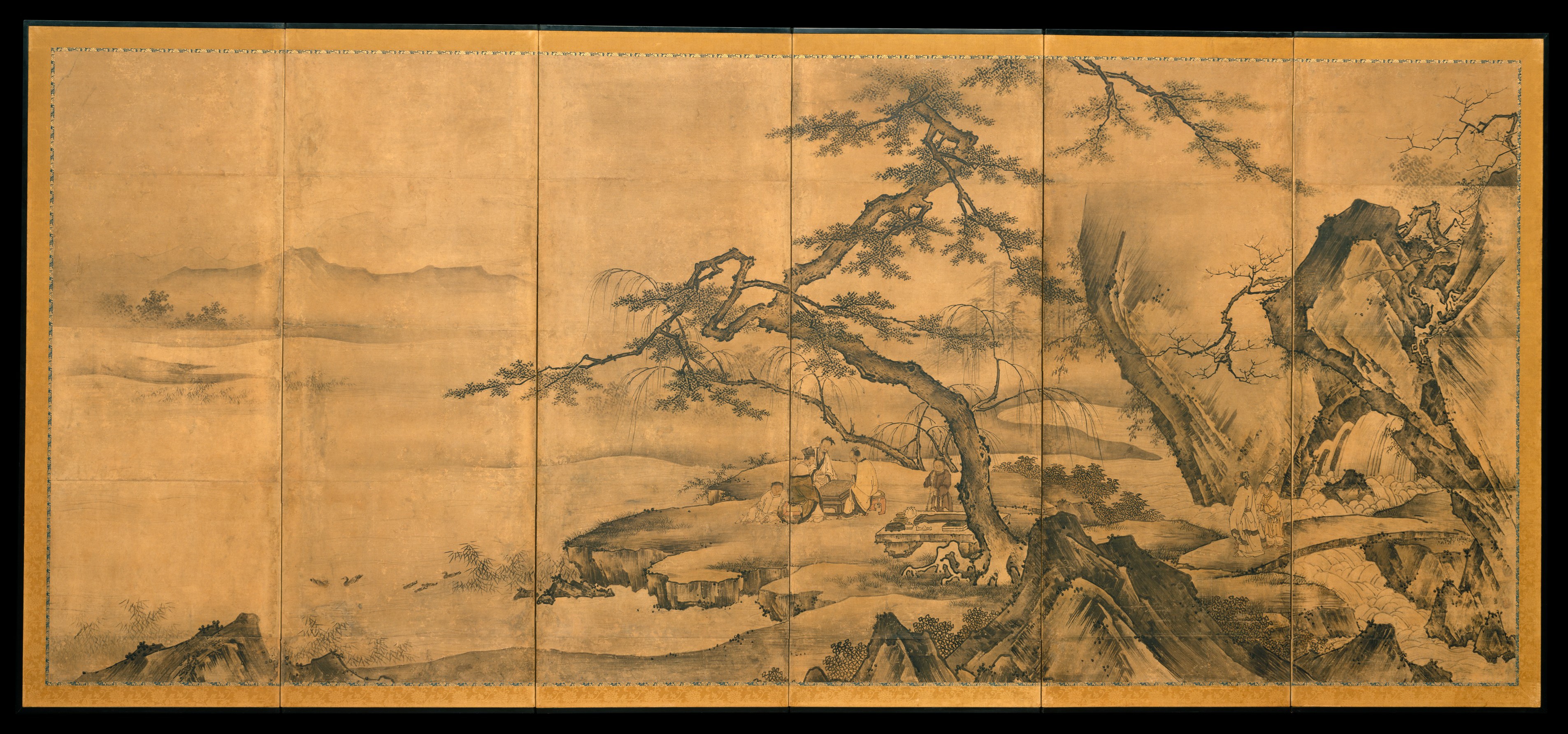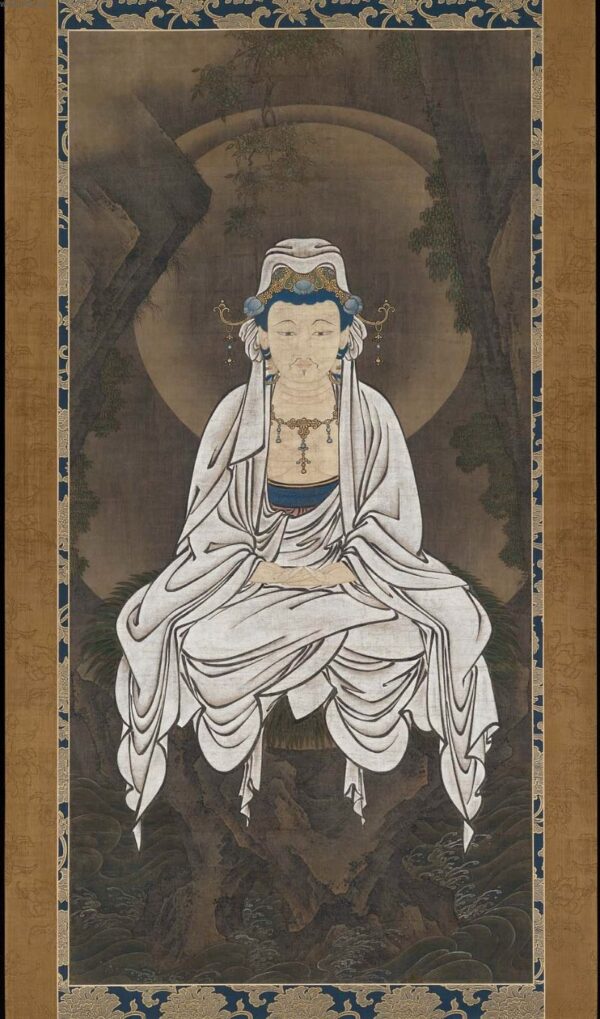
A Day In the Life

Everyday, we wake up and we hurry to our jobs or to school. We become part of a routine that seems to encapsulate us. In this series, we will take a moment from our hectic, fast-paced world, step outside of our routine, and imagine what life may have been like across cultures and eras.
The Kano School of Painting
The Kano School of Painting was the premier school of painting in Japan for over 300 years, from the 16th century into the 19th century. The school was started in the 15th century by Kano Masanobu in Kyoto, and according to the Metropolitan Museum of Art Website, it soon became the “longest lived and most influential school of painting in Japanese history.”
The website continues:
“Throughout the centuries, the Kano school consisted of numerous studios where groups of well trained and skillful craftsmen worked together to serve clients from almost all wealthy classes, including the samurai, aristocracy, Buddhist clergy, Shinto shrines, and the increasingly affluent merchants.”

There’s not a lot of information pertaining to the studio practice of Kano ateliers before the 19th century. There just might be enough information, however, to imagine what it would be like to be a student there.
We will use Brenda G. Jordan’s essay, “Copying From Beginning to End?: Student Life in the Kano School,” from the book “Copying the Master and Stealing His Secrets” (2003) to aid our mental journey into the daily life of a student at a Kano school.
Imagining Student Life at a Kano School
Today is another day at the Kano School of Painting. Since our study begins at 7am, we awaken early in the morning to prepare ourselves. Today, like most days, will be long, and we will work from 7am to 10 pm learning the craft of painting.
Almost all of us at the school are from high ranking-families. We came here when we were young, about seven or eight. Since then, we have devoted our lives to learning the art of painting. Even now, as we awaken from our sleep, the smells and sights of the colors in the studio invigorate our senses.
When we first arrived as children, our interest and dedication were tested. We were made to do daily chores such as clean and walk the dog. We were taught very little about painting, but this did not deter us. This was actually part of our education; not only did it teach us to keep a clean studio, but it also taught us the importance of learning through unobtrusive observation.
Many of us would watch the more advanced students work while we completed our daily chores. There is a clear hierarchy at the school; the master is at the top, the new students are at the bottom, and everyone else is in between. The advanced students even get to sit near the window where there is adequate light while everyone else sits away from the light.
The master mostly stays in his private room and only critiques works of art when such works are brought to him. He rarely if ever lectures on painting. So, many of us initially learned by watching the other students. We learned not only about painting, but how to conduct ourselves with the character required of a painter.
It was always unclear when we were to start painting, so some of us just took the initiative ourselves. We employed what we learned by watching the other students. We learned more by way of example than we did by explanation. Quite often, we pleased the master when we overcame our fears and picked up the painting tools to begin practicing.
Our practice consists mostly of copying other works. We start with copying paintings of simple objects before moving onto more complex objects. Then we copy the figure before copying the paintings of the masters. This process could take over ten years of study; some students do not finish after twenty years.
The master, quoting Hayashi Moriatsu’s advice on painting, would reiterate the importance of copying:
“The painter who doesn’t [copy], always entrusting to [his own] self-will, is an unskilled, unworthy fellow… The person who desires to draw properly the correct way and uses [copying] every time without changing the rules of the ancients is one who understands that he is inadequate; [he] comprehends the sacredness of the men of old, is roused to try to achieve the true path of painting, and wishes to search for the divine spirit.”

We come to learn that our success in painting is dependent upon the success of our classmates, our master, and the generations before us. Learning to paint also becomes learning our place in our community; it becomes learning to be selfless.
We copy and copy and copy until certain movements and procedures become second nature to us. Only then do we move up in rank within the school hierarchy, and only after moving up in rank are new paintings revealed to us to copy.
There seems to be a certain secret of painting that is unlocked through copying. Late at night, some students sneak to examine the master’s paintings in detail; some students sneak to find hidden paintings to copy in the hopes to obtain this secret faster.
Moving up rank, we learn everything about the school including business matters. Depending on our skill level, we would possibly help run the school or help the master with commissioned paintings. If we prove to be competent in all matters, we graduate from the school, take on our master’s name, and begin our lives as professional painters.
Until then, we each have our space on the floor about 12 feet by 6 feet, a tatami mat, and a chest that holds all of our art supplies. This space, shared with our friends, becomes our world, a world through which we connect with the sense of beauty possessed by those before us, a beauty we hope to share with our greater community.
Eric Bess is a practicing representational artist and is a doctoral candidate at the Institute for Doctoral Studies in the Visual Arts (IDSVA).






Be the first to comment